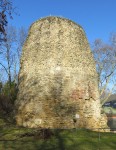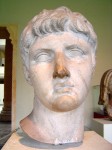
Ancient Romans already knew how to manage their people. For example, the Drusus Stone monument in Mainz demonstrates the importance of keeping your people both busy and motivated.
I’ve recently been visiting the nearby city of Mainz again, taking a walk in the Citadel of Mainz. One of the particularly interesting sites is the Drusus Stone, the remains of a Roman monument honoring General Drusus. For some, this is merely one of many Roman remains in Germany.However, you’re not visiting AllAboutLean.com for Roman history – there are better sites for that.
No, for me the Drusus Stone is an example of Roman management techniques, which are still valid today. While the ostensible idea is to honor a Roman general, I believe there is also a hidden reasoning which will tell us much about Roman management and hence also about modern management.
The Historic Facts of the Drusus Monument


Let’s start with the historic background. Nero Claudius Drusus Germanicus (38 BC – 9 BC) was the stepson of the first Roman Emperor Augustus. As such, he was able to take many shortcuts in his career path, and by the age of 26 he was commanding an army in combat against Germanic tribes. Apparently, he was very popular with his legionaries. His death, however, was nothing dramatic. He fell from his horse at age 30 and died from complications due to a broken leg.
The Hidden Management Lesson
On first glance, the facts are clear. General dead – honor him with a monument. However, I believe there’s more to it than that. While hard facts are of course hard to find after two thousand years, I strongly believe the building of the monument was a motivational activity for the legionaries. Bored men in large groups are a sure recipe for trouble. This applied to Roman legionaries two thousand years ago just as it does to modern-day soldiers or workers. Hence, a good officer/manager keeps his men busy at all times.
It just happens to be that around 8BC – the year before the construction – the main enemies in the region were either defeated (the Sicambri) or decided that they’d had enough and moved elsewhere (the Marcomanni). As a result, there was probably much less to do for the legionaries than before. Hence, I strongly believe that building this monument was at least in part to keep a lot of troops busy at comparatively rather peaceful times.
Additionally, since Drusus was supposedly popular, not only did it keep the men busy, but it also raised their morale. They were part of something bigger, something built for eternity – or so far at least two thousand years and counting. So the commander of the Castrum Mogontiacum killed two birds with one stone: his people were both orderly and happy.
Application for Today‘s Managers
How does this apply to modern day management? First, I do NOT suggest that you assemble your men to build a 20-meter marble tower in honor of the late plant manager. The building of monuments has gone a bit out of fashion since two thousand years ago. Besides, management tends to vastly overestimate their popularity with the common worker (after all, not many tell their bosses that they do not like him/her). Hence, rather than raising morale you may instead have the opposite effect. Additionally, during Roman times building such a tower was mostly labor and not so much cash, whereas nowadays the cost of such an undertaking would be much larger. On top of that, the Roman legionaries were idling anyway, whereas your workers should actually be working.
So the message is that you should keep your workers busy at all times. Slow speed and idleness is the root of mischief and negligence. Your workers should work at regular normal speed (which they can sustain for a working man’s career without health damage, mind you). If you do not have enough work, give them additional tasks or send them home rather than having them work at less than regular speed.

Additionally, while you probably should not build a monument, you should celebrate achievements. I have seen countless successful projects where, upon completion, management moved on immediately to the next project. Stop! Take a moment to celebrate. Gather your troops together and thank them for the work, appreciate their efforts, and give them time to cherish the achievement! And, if possible, give them a small reward. I don’t mean a raise or a cash bonus, but merely a small appreciation besides words (which are cheap). For example, I usually hand out three-pound packs of gummy bears as a reward for project completion. But whatever you can think of, make sure their contribution is valued.
The methods of keeping your people orderly and motivated may have changed in the last two thousand years, but people have not. Keep them busy and appreciate their work! Now, go out and improve your Industry!
 PS: If you would like to read more about history of manufacturing, then check out my book:
PS: If you would like to read more about history of manufacturing, then check out my book:
Roser, Christoph, 2016. “Faster, Better, Cheaper” in the History of Manufacturing: From the Stone Age to Lean Manufacturing and Beyond, 439 pages, 1st ed. Productivity Press.
